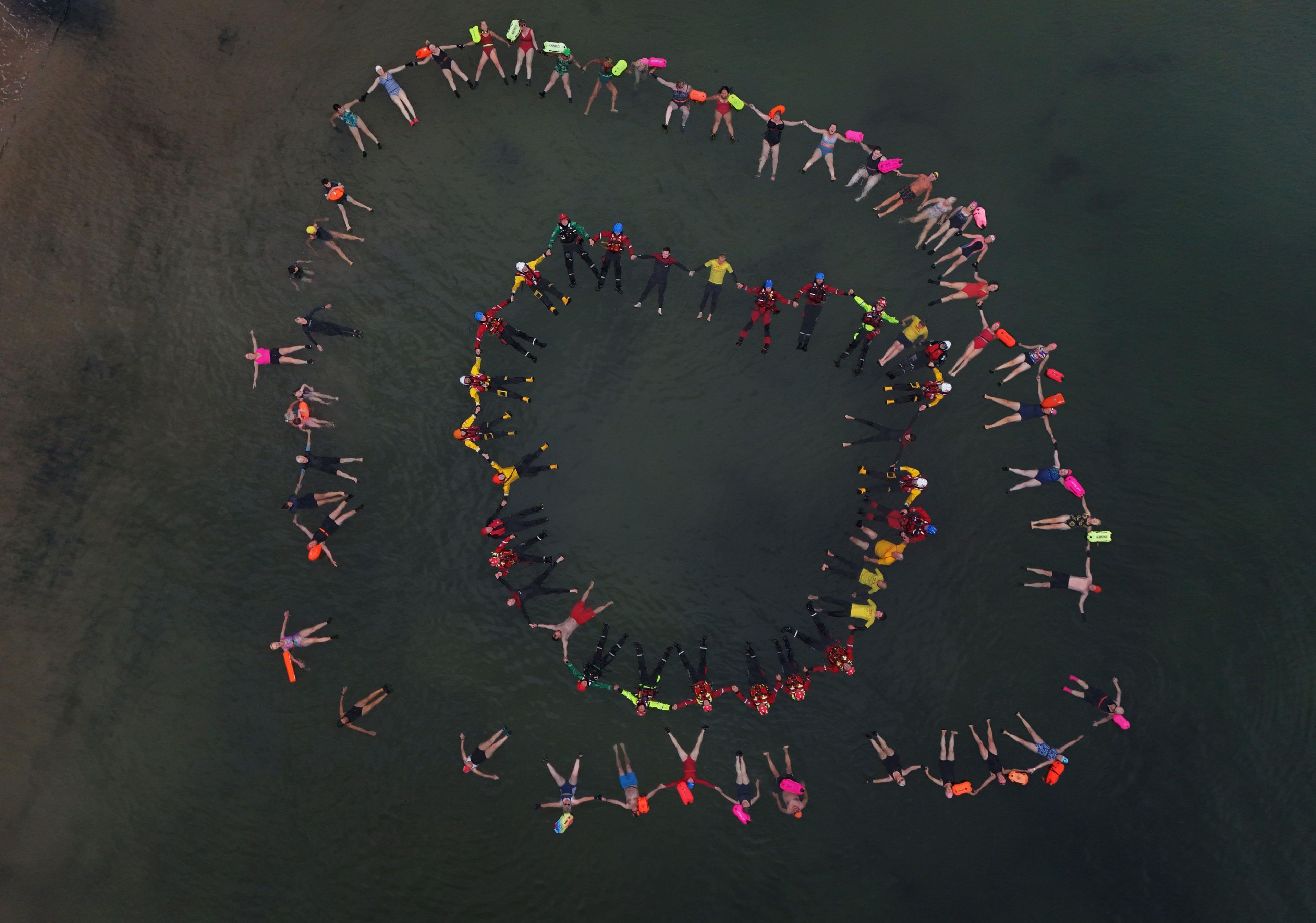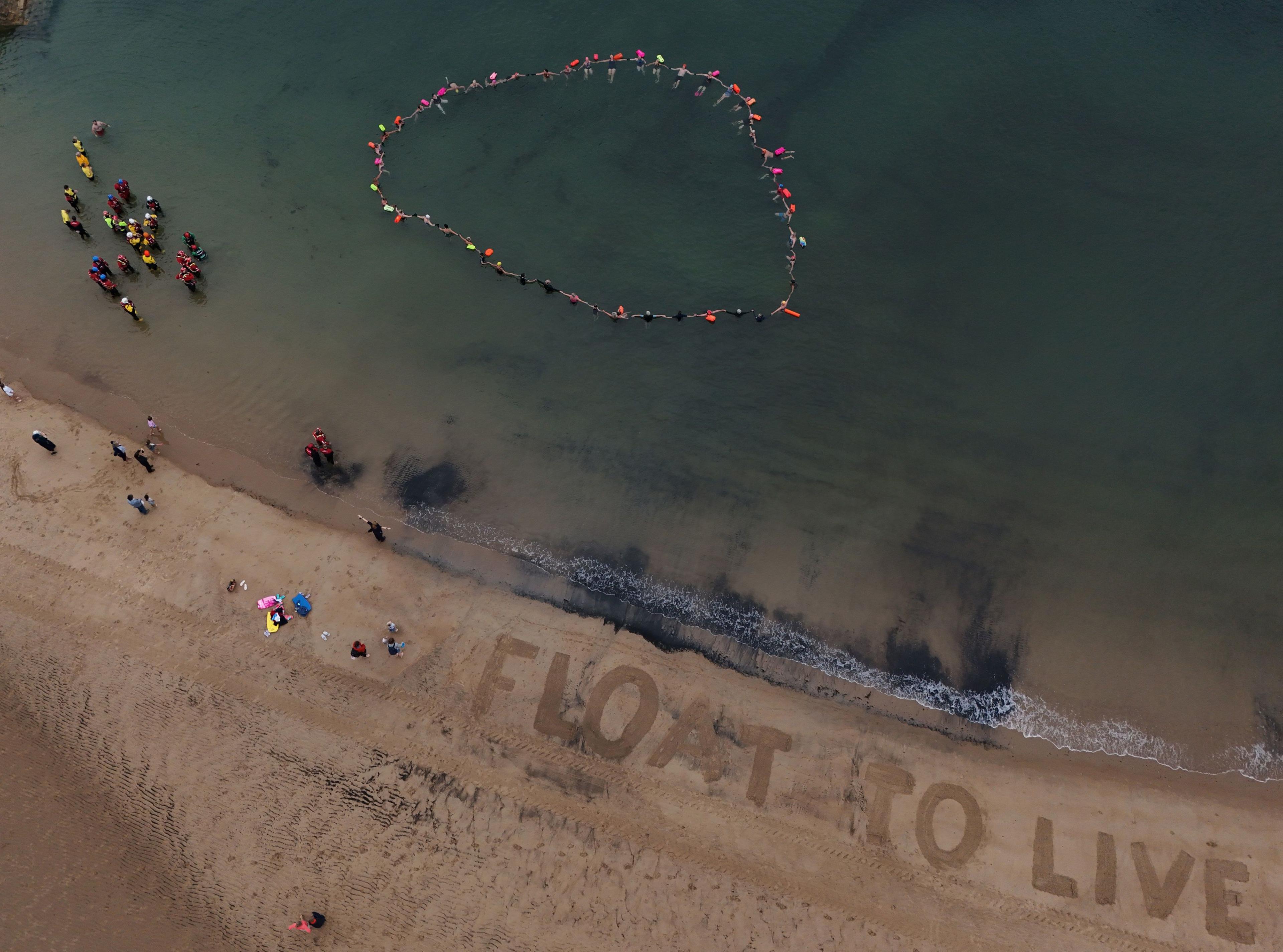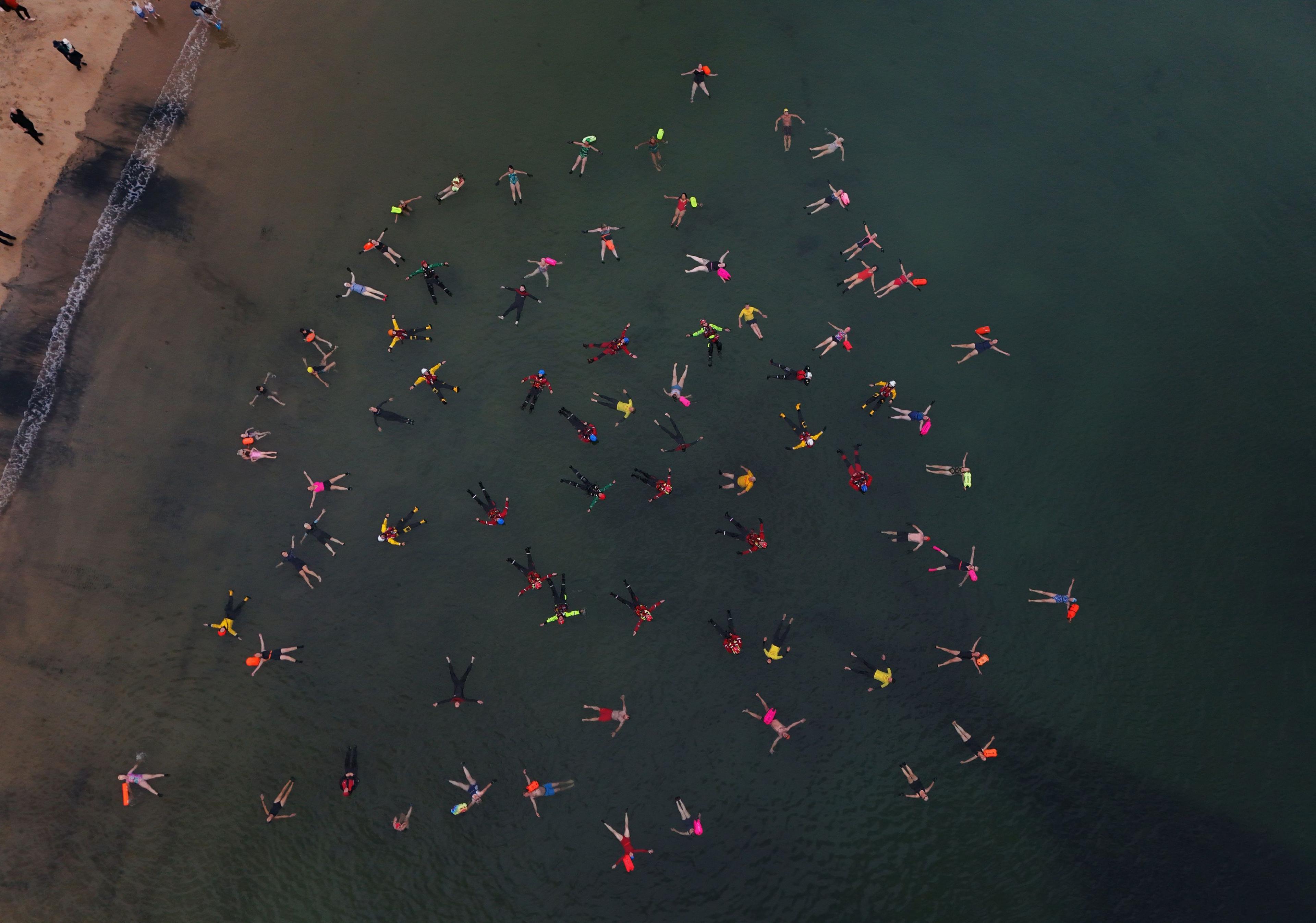World Drowning Prevention Day: How just floating in the water can save lives

Floating in water is an important skill that can save lives
- Published
Over 40 people floated together off the coast of North Tyneside, England this week to bring attention to the Float to Live technique.
This is a technique that can help prevent serious injuries or drowning in the water.
The group gathered ahead of World Drowning Prevention Day on July 25.
But what is World Drowning Prevention Day? And why can floating in water help save the lives of even inexperienced swimmers?
Find out here.
Find out loads more about water safety
- Published20 May
- Published17 May 2024
- Published9 August 2022
What is World Drowning Prevention Day?
Ravi used the Float to Live technique when he was swept out to sea (August 2020)
The day was declared by the United Nations in 2021 to bring attention to the importance of water safety.
Drownings can happen if a swimmer is inexperienced or if they make unsafe choices.
Many accidents also happen in outdoor swimming locations like beaches, rivers and lakes.
A number of organisations including safety charities the Royal National Lifeboat Institution (RNLI) and the Royal Society for the Prevention of Accidents (RoSPA) say one of the best ways to prevent accidents in the water is the Float to Live technique.
Float to Live: What do you need to do?

The Float to Live technique was developed with the University of Portsmouth and the RNLI.
They say if you are in a situation where you feel unsafe in the water, you can use the following steps to float and wait for help:
Tilt your head back - your ears should be underwater, but your nose and mouth above water to allow you to breathe
Relax - Try and control your breathing
Gentle movements - Move your arms and legs gently to stay afloat
Legs - Your legs might sink lower than your torso in the water but that's ok, everyone floats differently
The RNLI also recommends practicing floating in local pools with supervision from an experienced trusted adult like a lifeguard.
Top tips for being safe around water
Tips to stay safe in and around water
In the summer, lots of us love a dip in the local pool or at the beach to cool off.
But there are some important things you should know if you want to stay safe in the water.
Newsround spoke to some water safety experts to get their advice on what you can do to keep yourself and others safe.
What is cold water shock?

Open water in the UK can be very cold even in summer months
Many swimmers are often shocked at the temperature of water, even in warm summer months.
According to research from the University of Portsmouth, the average temperature of UK and Irish waters is 12⁰C.
While this might not sound very low, the RNLI say any water temperature below 15⁰C is considered cold.
And inland bodies of water like lakes and rivers can often be colder than the sea.
Cold water can cause swimmers to panic, which is why staying calm and floating on the water can help keep you safe.
